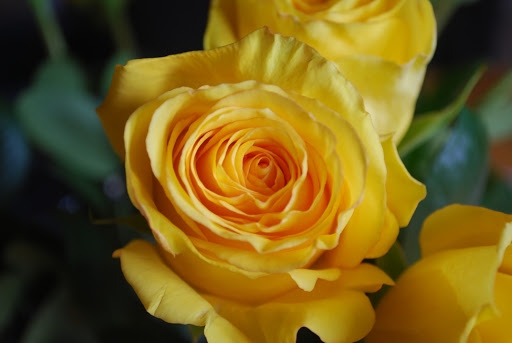Galentine’s Day: “Ladies Celebrating Ladies”
Every year, during the dreary month of February, comes one of the most hated and debated holidays of them all: Valentine’s Day. The originally Catholic holiday has been widely celebrated in America since the nineteenth century as a celebration of romantic love. In recent years, Valentine’s Day has come under criticism, particularly for it’s commercialism (Americans were expected to spend 20 million dollars on the holiday this year) and prioritization of romantic relationships. In the past few years however, pop culture has offered up a less problematic alternative: Galentine’s Day.
Galentine’s Day is an unofficial holiday on February 13th by women around the country, celebrating female friendship in the face of hyper-romanticised, commercialist Valentine’s Day.
The concept originated as the premise of 2010 episode of Parks and Recreation, when main character Leslie Knope introduced her tradition of inviting her female friends for breakfast on Valentine’s-eve. The idea caught on among everyday women, becoming the cultural phenomenon it is today. The holiday made a comeback on the show in later seasons, adding to its popularity.
The holiday began to gain recognition on a larger scale in 2017, when brands such as Target and Lyft promoted special offers related to Galentine’s Day. That same year, #GalentinesDay trended on twitter for the first time, and American women started to adopt as an annual tradition.
Since then, Galentine’s Day has exploded in popularity, due in part to the resurgence of feminism during the past two years. More and more women are celebrating the pseudo-holiday, and its hashtag overtakes social media every February.
Many people today, especially young people and teenagers, have adopted a cynical attitude towards the tradition of Valentine’s Day. The extent to which the holiday has been commercialized in the last century doesn’t sit well with younger generations. “You are surrounded by ads and things on social media that show you what the ideal Valentine’s Day is, and it makes people believe that they aren’t truly in love unless they do something even more grandiose then what they are seeing online,” said sophomore Kieran Delvecchio.
Valentine’s Day can be problematic on a more personal level as well. It’s no secret that there is already pressure for teenagers to participate in romantic relationships others, and those who don’t conform to this cultural ideal often feel left out and insecure. The ultra-romantic holiday only heightens this effect. LGBT+ teenagers in particular struggle with Valentine’s Day, feeling unwelcome or unsafe in celebrating the same way straight couples can. This trend has played a part in the growing population of Galentine’s Day among teenage girls.
Unsurprisingly, Galentine’s Day has caught on among female Talawanda students. Groups of friends might get together to have coffee, exchange small gifts, or just enjoy each other’s company. Many celebrations include aspects of that original fictional holiday. “For Galentine’s Day, I get together with my best friend and we watch that episode of Parks and Rec and have brunch,” Molly Monson, a senior, said.
Many Talawanda girls connect with the message of the holiday. “I think that there is far too much pressure from the media for girls to grow up and have romantic experiences, so pushing a friend holiday similar in nature to Friendsgiving could only be good,” added Monson. Students, like junior Lily Cronley, who don’t buy into the expectation of romance, appreciate the importance it places on friendships. “It’s helping it make it more open and about accepting all relationships, rather than promoting romantic ones and putting down people who are only in platonic ones. It really about celebrating relationships in all forms,” Cronley said.
On a higher level, the values promoted through Galentine’s Day have beneficial implications for how we view female friendship. It encourages friendship and independence among young women, subverting the expectation that we need romantic relationships to be fulfilled. It may even be redefining it’s mother holiday, moving away from the strictly heterosexual, romantic version, which makes the celebration much more accessible.
Even since before the rise of hashtags and Leslie Knope, girls have been using Valentine’s Day as an opportunity to enjoy each other’s friendships. “When I was in college, I lived with nine girls,” English teacher Ms. Alfonsi recalled, “and we had this thing called ‘Valloween’ and we’d just buy each other candy.” Galentine’s Day or not, it is clear that women will find away to celebrate each other.
Yellow roses signify friendship, and would make a great Galentine’s Day gift. Photo Cred: Kei Brown



